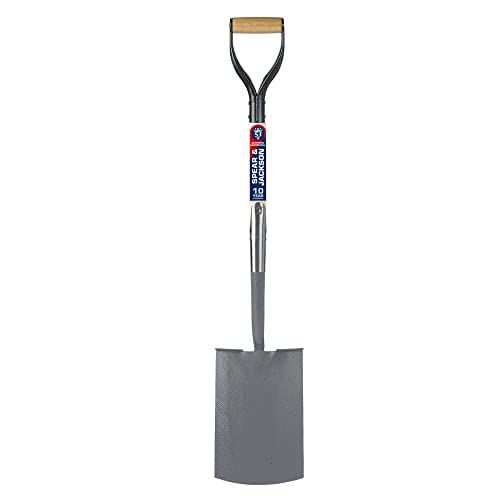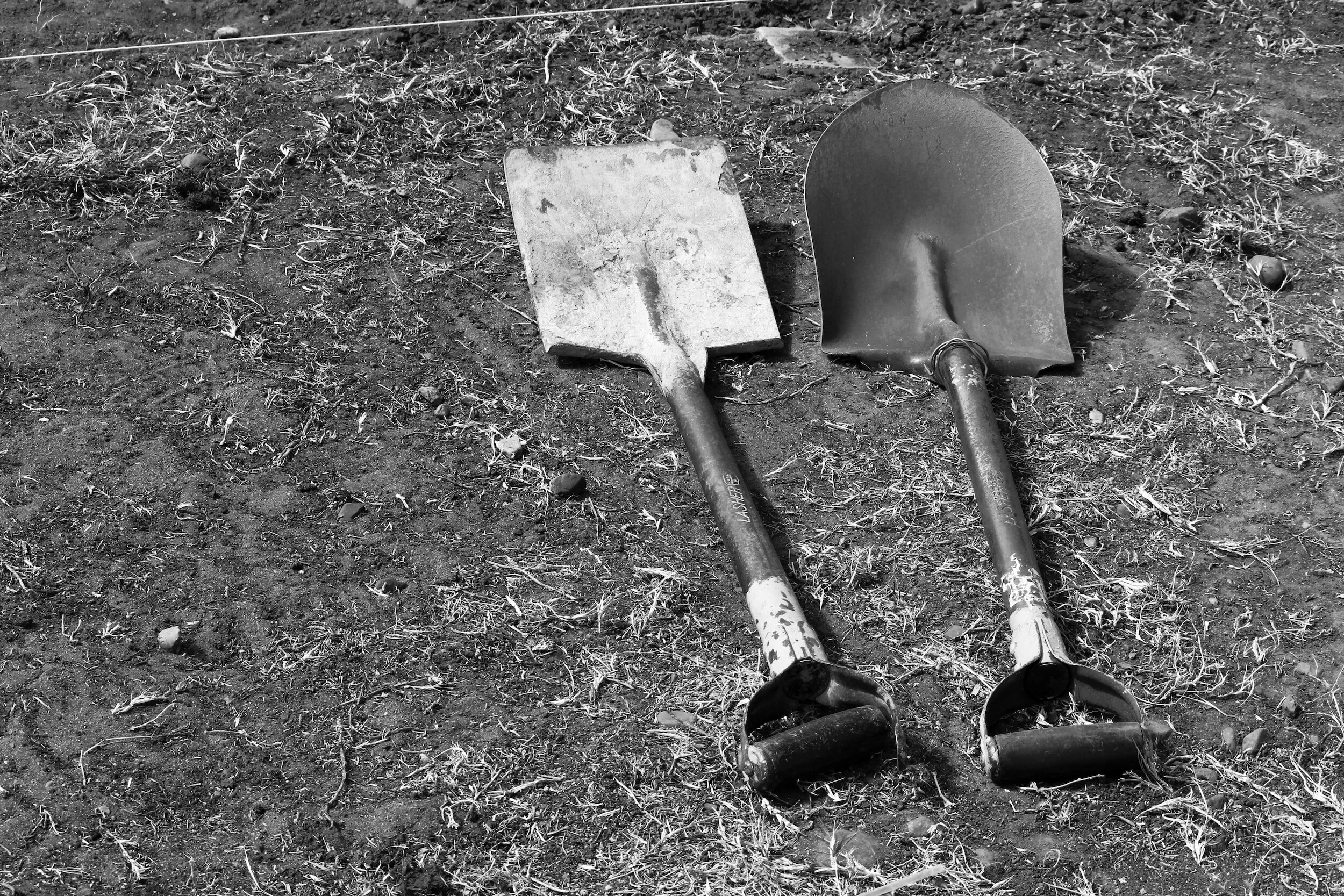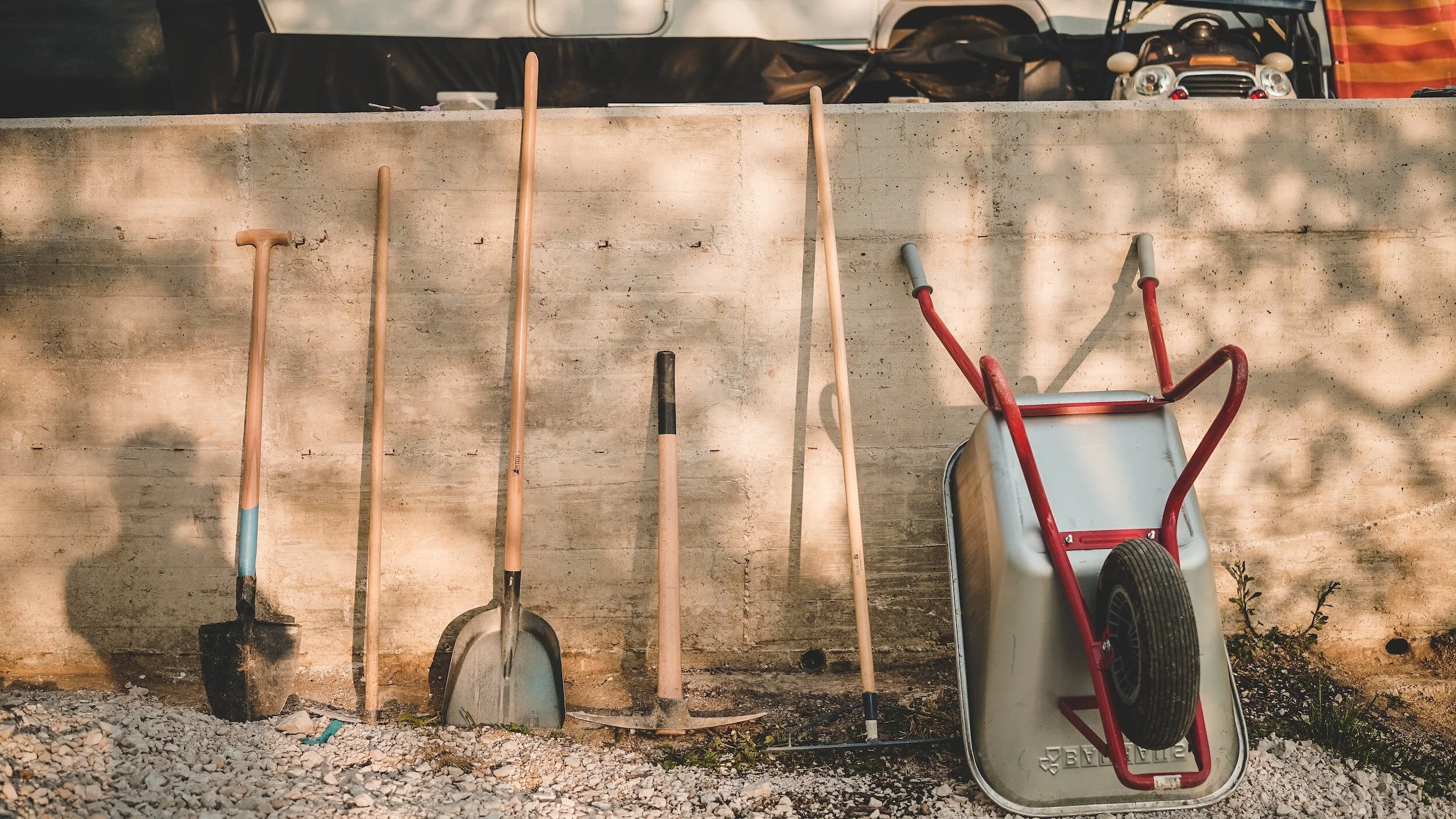Spade vs Shovel: Digging into the Differences
This article has links to products that I may make commission from.
In the garden shed or at the garden store, two tools are bound to catch your eye: the shovel and the spade.
Despite their outward similarities, these two handy implements each have unique characteristics and functions that set them apart.
But when you're knee-deep in soil or planning your next gardening project, the "Spade vs Shovel" question can seem puzzling. With a variety of shapes, sizes, and designs to consider, picking the right tool for the job is crucial.
In this guide, we'll delve into the world of shovels and spades, clarifying their differences, and helping you choose the right gardening tool for your gardening needs. With my comprehensive guide, you'll not only understand the nuances between a shovel and a spade but also how to effectively use each one in your garden.
So, let's dig in.
To learn more about choosing the best gardening tools, check out my guides:
The Best Gardening Tool Sets for Every Gardener
The Ultimate Guide to Choosing the Best Electric Propagators
Also, check out my guide The Best Gifts for Gardeners.
What is a Spade?
A spade is a tool that is a gardener's best friend.
Often characterized by its short handle and a rectangular or nearly flat blade, a spade is primarily used for digging, cutting edges, and sectioning off areas within your garden.
The core functionality of a spade lies in its design. Unlike shovels, the flat edge of the spade's blade is made to slice through the soil, making it an exceptional tool for digging straight-sided, flat-bottomed holes.
This attribute also makes it particularly useful for trenching and cutting sod.There are several types of spades, each with specific uses.
A garden spade, for example, is an essential tool for any gardener. It is often used for double digging, removing turf, and cutting through roots. Its typically flat, square blade is designed for efficient cutting, especially through tough grass or soil.
My recommended garden spade:
The digging spade is another popular variant. Its larger blade is designed for heavy-duty digging tasks. Its sharpened edge helps slice through roots and heavy soil, making it perfect for preparing planting beds or digging deeper holes.
My recommended digging spade:
The spade's design extends beyond its blade. A robust and ergonomic handle allows for comfortable and efficient use.
Whether made from traditional wood or more modern materials like fiberglass, the handle of the spade is designed to provide a secure and comfortable grip, reducing strain on your hands and wrists.
Despite being often mistaken for a shovel, a spade is a unique and versatile tool. It plays an essential role in gardening, landscaping, and other outdoor projects.
Its specific design, featuring a flat or slightly concave blade and a shorter, sturdy handle, is what sets it apart. Whether it's a garden spade or a digging spade, understanding its features and uses will allow you to harness its full potential in your garden.
Equip your urban green space with my recommend top tier tools.
What is a Shovel?
A shovel is a tool that every gardener, landscaper, or construction worker will be familiar with. This versatile tool is characterized by a long handle and a broad scoop or blade that's typically rounded at the end.
The primary function of a shovel is to lift and move loose material like soil, gravel, sand, coal, snow, or even compost.
The defining characteristic of a shovel is its blade design. Unlike the straight edge of a spade, the shovel's blade is typically curved or pointed.
This shape allows it to hold and carry material from one place to another effectively, making it an indispensable tool for moving bulk materials.
Let's delve into some specific types of shovels. The round point shovel, for instance, is one of the most common types of shovels you'll find in a garden shed.
As the name suggests, it features a rounded, pointed blade. This design makes it perfect for digging holes or breaking up hard, compacted soil.
The round point is designed to penetrate the ground more easily, allowing for more efficient digging.
My recommended round point shovel:
On the other hand, the root slayer shovel is a specialized type of shovel designed to cut through roots.
Its sharpened "Inverted V" cutting blade and specially designed root-cutting rip saw teeth eliminate the need for saws and hatchets when dealing with root-infested landscapes.
My recommended root slayer shovel:
Apart from gardening and landscaping, shovels have broader uses as well.
For instance, a snow shovel is designed with a wide scoop and a slight curve to help move large amounts of snow quickly.
My recommended snow shovel:
Shovels can be crafted from various materials, with steel-bladed ones known for their strength and durability. Also, the handles can be made of wood, metal, or fiberglass, offering a balance between weight and durability.
In conclusion, a shovel is a versatile tool designed primarily for digging, lifting, and moving loose materials. The variety of shovel types caters to a range of specific needs and tasks, from general gardening and landscaping to more specialized tasks like root cutting or snow clearing.
Understanding the different types of shovels and their uses can help you make the most out of this essential tool.
Check out my guide: The Best Gardening Books for Beginners.
What is the Difference Between a Shovel and a Spade?
Understanding the key differences between a spade and a shovel can make a world of difference in your gardening, landscaping, or construction endeavors.
Here are some of the main points of distinction:
Blade Design
One of the most apparent differences between the two tools lies in the design of their blades.
Spades typically have a flat, rectangular, or square blade designed for cutting and sectioning off soil. The straight edge of a spade allows for precision in edging beds, cutting through turf, or breaking up hard soil.
On the other hand, shovels are characterized by a curved or pointed blade designed to lift and move loose material. This design allows for the effective collection and transportation of materials such as soil, compost, snow, or gravel.
Handle Length
The handle length of spades and shovels also tends to differ.
Spades typically have a shorter handle, enabling precise control and direct application of force, especially beneficial when edging or working in smaller spaces. Shovels, however, usually have longer handles, which provide leverage for lifting heavier loads and reduce the strain on the user's back when digging.
Intended Use
Each tool has specific uses that they excel at. A spade is often used for edging, double digging, dividing perennials, and slicing through roots or sod.
Its design lends itself well to precision tasks that require control and a straight cut. Conversely, a shovel is best used for digging holes, moving and spreading soil or mulch, and transferring loose material from one place to another.
Its rounded or pointed blade and longer handle make it ideal for tasks that involve lifting and moving.
Types of Spades and Shovels
The terms "spade" and "shovel" encompass a variety of tool types, each with its unique design and intended use.
For instance, a drain spade is a type of spade with a long, narrow blade used for digging deep, precise holes, while a trenching shovel features a narrow, curved blade perfect for digging or clearing trenches.
Knowing these key differences can help you select the right tool for your gardening or landscaping task, ensuring efficiency and minimizing your efforts. Whether it's a spade or a shovel, knowing your tools' capabilities and applications is the key to successful and enjoyable outdoor work.
Material Matters: Gauge Hardened Steel and More
When choosing between a spade or a shovel, understanding the materials used in their construction can greatly influence your decision.
From the strength and durability to the weight and feel of the tool, the material matters significantly.
Gauge Hardened Steel
One of the most common materials used for making spade and shovel blades is gauge hardened steel.
This material is known for its toughness, resistance to wear and tear, and its ability to retain a sharp edge.
A gauge hardened steel blade can cut through dense soil and roots without deforming, making it an excellent choice for both spades and shovels.
Moreover, the term "gauge" refers to the thickness of the steel used. A lower gauge indicates thicker steel, translating to a more robust and durable tool.
Therefore, a gauge steel blade could be your best bet when looking for a tool to withstand heavy-duty tasks and last for many years.
Fiberglass Handle
In addition to the blade, the handle is another vital component of spades and shovels.
One of the most common materials used for handles is fiberglass. A fiberglass handle offers a combination of durability, strength, and lightweight. It is resistant to weathering and does not warp or rot like wood, making it a good choice for outdoor tools.
Also, it's lighter than metal handles, reducing fatigue during prolonged use.
Other Materials
While gauge hardened steel and fiberglass are common, other materials can also be used. For example, stainless steel is an excellent alternative for blades, offering resistance to rust and corrosion, especially in wet conditions.
Similarly, wooden handles, despite their vulnerability to weathering, are favored by many gardeners for their comfortable grip and traditional feel. They also have the advantage of being easy to replace if they break or wear out.
Making the Choice
When choosing the right material for your spade or shovel, consider the nature of your work and personal preferences. If you frequently deal with compacted soil or roots, a spade or shovel with a gauge hardened steel blade would be ideal.
If you prefer a lighter tool that withstands all weather conditions, opt for a fiberglass handle. In conclusion, the materials used in the construction of spades and shovels greatly influence their performance, durability, and user comfort.
By understanding the properties of these materials, you can make an informed decision when purchasing your next gardening or landscaping tool.
Digging Deeper: Shovel and Spade Uses
Shovels and spades are versatile tools with a variety of uses in gardening, landscaping, and construction.
Here we'll explore some of the common uses of these tools and how they can make your outdoor tasks easier and more efficient.
Uses of Shovels
Digging Holes: Round point shovels are the go-to choice for digging holes.
The curved, pointed blade easily penetrates the ground, making it perfect for tasks like planting trees or shrubs, or setting up fence posts.
Moving Materials: Shovels are designed for moving loose materials.
Whether it's soil, compost, gravel, or even snow, the wide, scooped blade of a shovel allows it to hold and transport these materials efficiently.
Breaking Ground: For breaking up hard or compacted soil, a digging shovel is ideal.
Its strong, rounded blade and long handle provide the leverage necessary to get the job done.
Uses of Spades
Edging and Shaping Beds: With a flat, straight blade, a garden spade is the perfect tool for edging and shaping garden beds.
It creates clean, straight lines and precise corners, making your beds look neat and tidy.
Cutting Through Roots and Sod: The flat, sharp edge of a spade can slice through roots and sod, making it perfect for tasks like preparing a new garden bed or dividing perennials.
Double Digging: Double digging is a technique used to aerate deep layers of soil, and a spade is the ideal tool for this. Its flat blade allows for precise control when digging deep and sectioning off the soil.
Whether it's a shovel or a spade, understanding the specific uses of these tools can help you tackle your outdoor tasks more efficiently. Regardless of the job, there's a shovel or spade designed to make your work easier and more enjoyable.
Armed with the right tool, you can turn your gardening or landscaping visions into reality.
Understanding the difference between a shovel and a spade is crucial when it comes to gardening and landscaping. Each tool has its unique design and purpose.
The flat blades of a spade, such as a square garden spade, are designed for tasks requiring precision and straight cuts. These can range from shaping and edging garden beds to slicing through roots and sod.
On the other hand, the rounded or pointed blade of a shovel makes it perfect for moving loose material and digging holes. Whether you're planning to plant a tree or start a new garden bed, a heavy-duty shovel spade is an indispensable garden tool.
Both shovels and spades come in various forms, from a basic round point shovel to a square garden spade, each with a specific use. It's also important to consider the material of your tool.
A strong, durable blade makes the difference in the longevity and performance of your tool.
Whether you're just starting your seed starting journey or have a fully blossoming garden, these tools are integral parts of your gardening arsenal. In essence, a shovel and a spade are more than just garden tools - they are the trusted companions of any gardener.
The right tool can not only make your task easier but also transform your gardening experience into a rewarding endeavor. So, the next time you step into your garden or head to a gardening store, remember - a spade is not a shovel, and a shovel is not a spade.
Armed with this knowledge, you'll be better equipped to choose the right tool for the job, ensuring efficient and enjoyable gardening.
Looking for more gardening inspiration? Check out my guides:








































